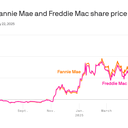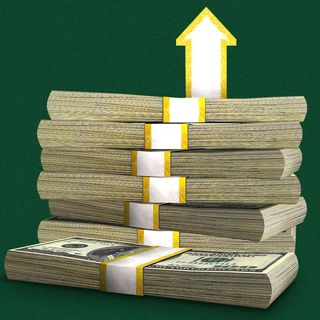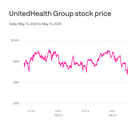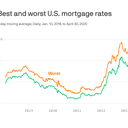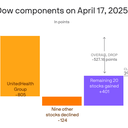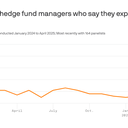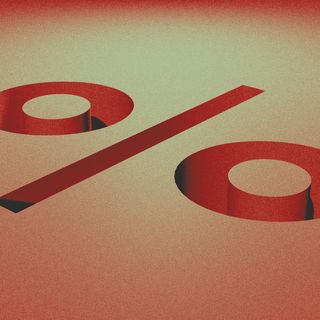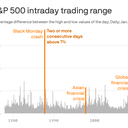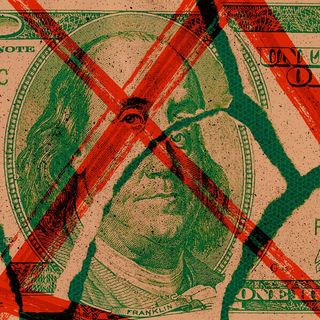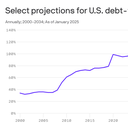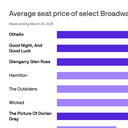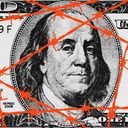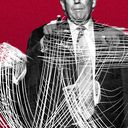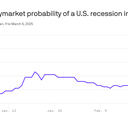Fannie Mae and Freddie Mac surge on Trump post
One of the riskiest and most speculative trades in financial markets just got a major boost by President Trump, when he announced Wednesday evening he is "giving very serious consideration to bringing Fannie Mae and Freddie Mac public."
Why it matters: The implication here is that Trump has decided "the time would seem to be right" to end the conservatorship under which the two companies have operated since the financial crisis of 2008.
- All this could mean profound changes to the structure of the mortgage market in the U.S. as well as the potential windfall for owners of their thinly traded common stock.
The big picture: The U.S. government controls both companies. Between them they owe the Treasury hundreds of billions of dollars in something known as a liquidation preference, cash they have kept on their balance sheets since the Treasury started letting them retain all their earnings in 2019.
- For privatization advocates, such as hedge-fund billionaire Bill Ackman, that's all money that the federal government should forgive.
- The so-called senior preferred securities owned by the Treasury should be "deemed repaid," he says in a detailed presentation he released in January.
- On the other hand, as JPMorgan managing director Sajjad Hussain notes in an analysis published following Ackman's presentation, "the feasibility and willingness to write off $340 billion owed to taxpayers may not be viable in the current political climate."
Between the lines: Trump does seem broadly sympathetic to Ackman's view that the government has already been repaid enough for the 2008 bailout.
- "The idea that the government can steal money from its citizens is socialism and is a travesty," Trump wrote in 2021, implying that the money being claimed by the Treasury is in some way illegitimate.
- For his part, Ackman reacted with a 👍 emoji to Trump's statement on taking the agencies public. (Both stocks rose more than 40% Thursday.)
What's next: Trump administration officials have now been charged with finding a route out of conservatorship for the agencies, one that doesn't destabilize the housing market or unnecessarily raise mortgage rates.
- And in order for that to happen, some sort of government guarantee will likely have to remain in place, probably in the form of Senior Preferred Stock Purchase Agreements, under which the government promises to inject cash into the companies should they ever need the money.
- So long as that guarantee remains, Fitch Ratings says, their credit ratings may not need to be adjusted downward. But that said, the ratings agency "expects the process of exiting conservatorship to extend multiple years in order to minimize potential disruption to the U.S. housing market."
The bottom line: Many presidents and many Treasury secretaries have proclaimed a desire to remove Fannie and Freddie from conservatorship.
- And thus far, none of them have found a way to do so. But the stock market seems to believe this time might be different.


